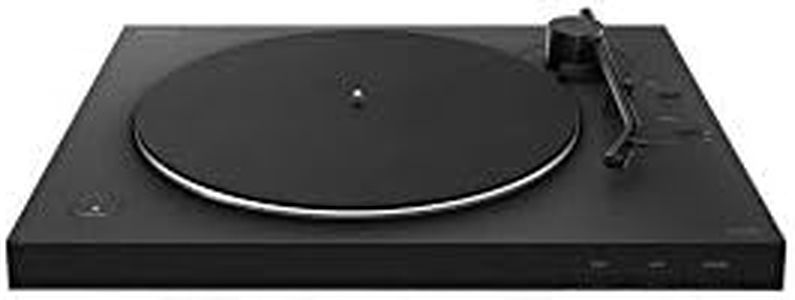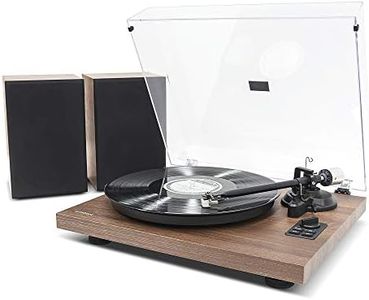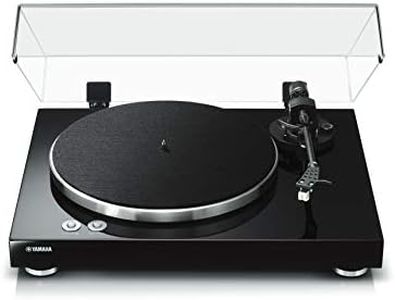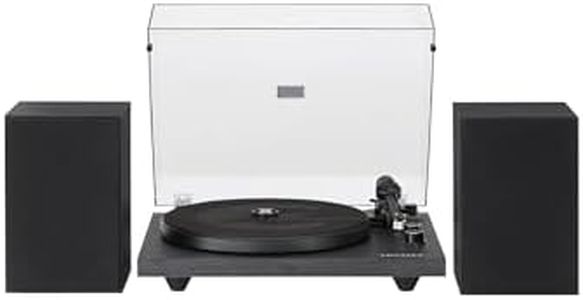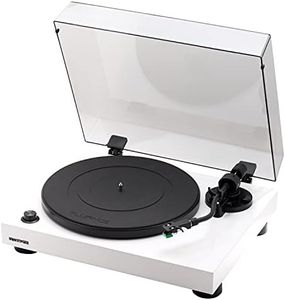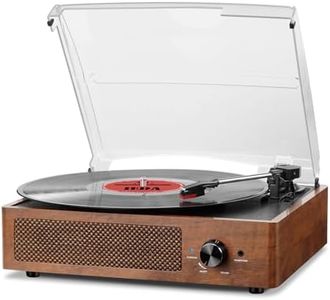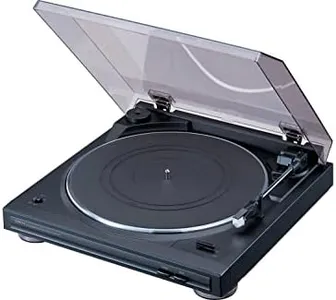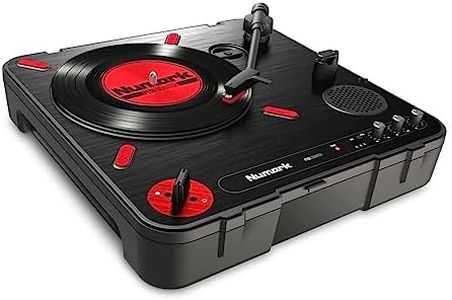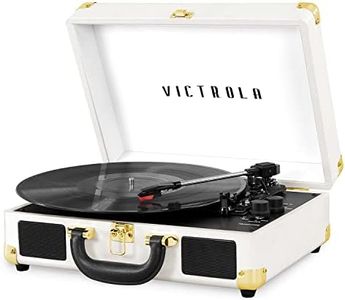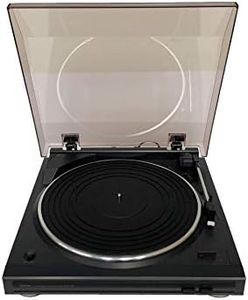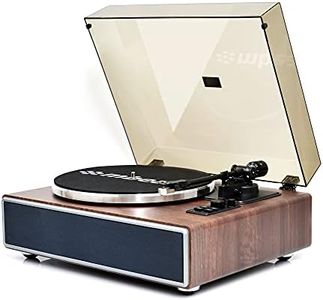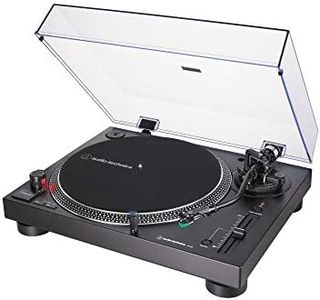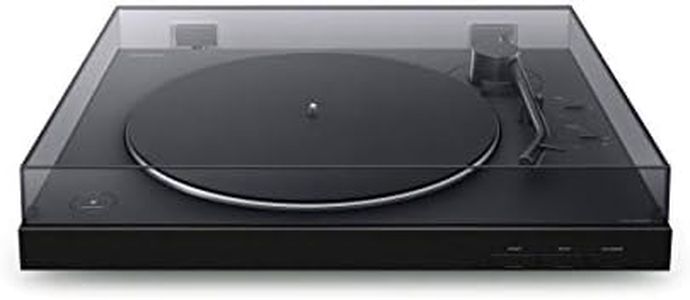We Use CookiesWe use cookies to enhance the security, performance,
functionality and for analytical and promotional activities. By continuing to browse this site you
are agreeing to our privacy policy
10 Best Turntables With Preamps
From leading brands and best sellers available on the web.Buying Guide for the Best Turntables With Preamps
Buying a turntable with a built-in preamp is a great way to bring vinyl into your audio system with less hassle. The preamp boosts the very quiet signal from your turntable to a standard level, allowing you to connect it directly to most speakers, receivers, or powered systems without needing extra equipment. When choosing the right model, it's important to look beyond appearance and think about features, performance, and how well it fits your other audio gear and your listening habits.Built-in Preamp QualityThe built-in preamp in a turntable is what makes the signal strong enough for regular headphones or speakers, instead of just specialized equipment. Quality can vary—higher-quality preamps give cleaner sound, with less background noise or distortion. Lighter listeners or casual users may not notice much difference, but dedicated listeners or those using high-quality speakers may prefer a model with a highly regarded preamp. If you anticipate upgrading your audio setup later, consider if the turntable lets you bypass the internal preamp to use an external one in the future.
Drive Type (Belt Drive vs. Direct Drive)Turntables use either a belt drive or direct drive to spin the platter. Belt drive turntables tend to provide better sound isolation and lower noise, so they are preferred by enthusiasts looking for pure sound when listening at home. Direct drive turntables are more robust and get up to speed faster—this is useful for DJs or people who want to use their turntable for mixing or scratching. For most casual music listeners, either type will work, but if you want superior sound quality and just plan to listen, a belt drive is often suggested, while direct drive is ideal if you anticipate more active use.
Cartridge and Stylus QualityThe cartridge and stylus (needle) are crucial for reading your vinyl records accurately. Better cartridges can reveal more musical details and cause less wear to your records. Entry-level turntables come with basic cartridges which are fine for beginners, but if you’re looking for the best sound, look for one that lets you easily upgrade the cartridge. If you're just starting, a simple, decent cartridge is sufficient, but if you plan to expand your system in the future, make sure the model allows swapping for a higher-end cartridge.
Speed OptionsTurntables spin at different speeds, most commonly 33 1/3 and 45 RPM. Some can also play 78 RPM records. You need a turntable that supports the speed(s) of your record collection. For most people with standard LPs and singles, 33 and 45 RPM are enough. If you plan to play older or specialized records, check for 78 RPM support. Match the turntable’s speed options to the records you have or plan to buy.
Connectivity OptionsBuilt-in preamps allow turntables to connect via standard outputs like RCA, but some models offer extra features like USB connections (for digitizing records) or wireless Bluetooth audio. If you only plan to connect to traditional amplifiers or powered speakers, RCA output is sufficient. If you want more flexibility—such as recording vinyl to your computer or using Bluetooth speakers—look for those extra outputs. Decide what you want your turntable to connect to and ensure the necessary connections are included.
Build Quality and DesignA more solidly built turntable resists vibrations and provides a stable spinning surface for your records, which improves sound quality and protects your records from unnecessary wear. Heavier materials, sturdy platters, and good feet help with this. For most listeners, a well-built turntable will sound better and last longer. If you care about aesthetics or have limited space, consider the size and style as well. Pick one that feels robust and suits your space and taste.
Automatic, Semi-Automatic, or Manual OperationTurntables can be fully automatic (start and stop with the push of a button), semi-automatic (manual start, automatic stop), or fully manual (you move the tonearm yourself at all times). Automatic models are more convenient and beginner-friendly, making them great for those who just want to enjoy music with minimal fuss. Manual models, favored by enthusiasts, give you more control over handling your records. Choose based on how hands-on you want the experience to be: If you want convenience, opt for automatic or semi-automatic; if you enjoy the ritual of vinyl, try manual.
